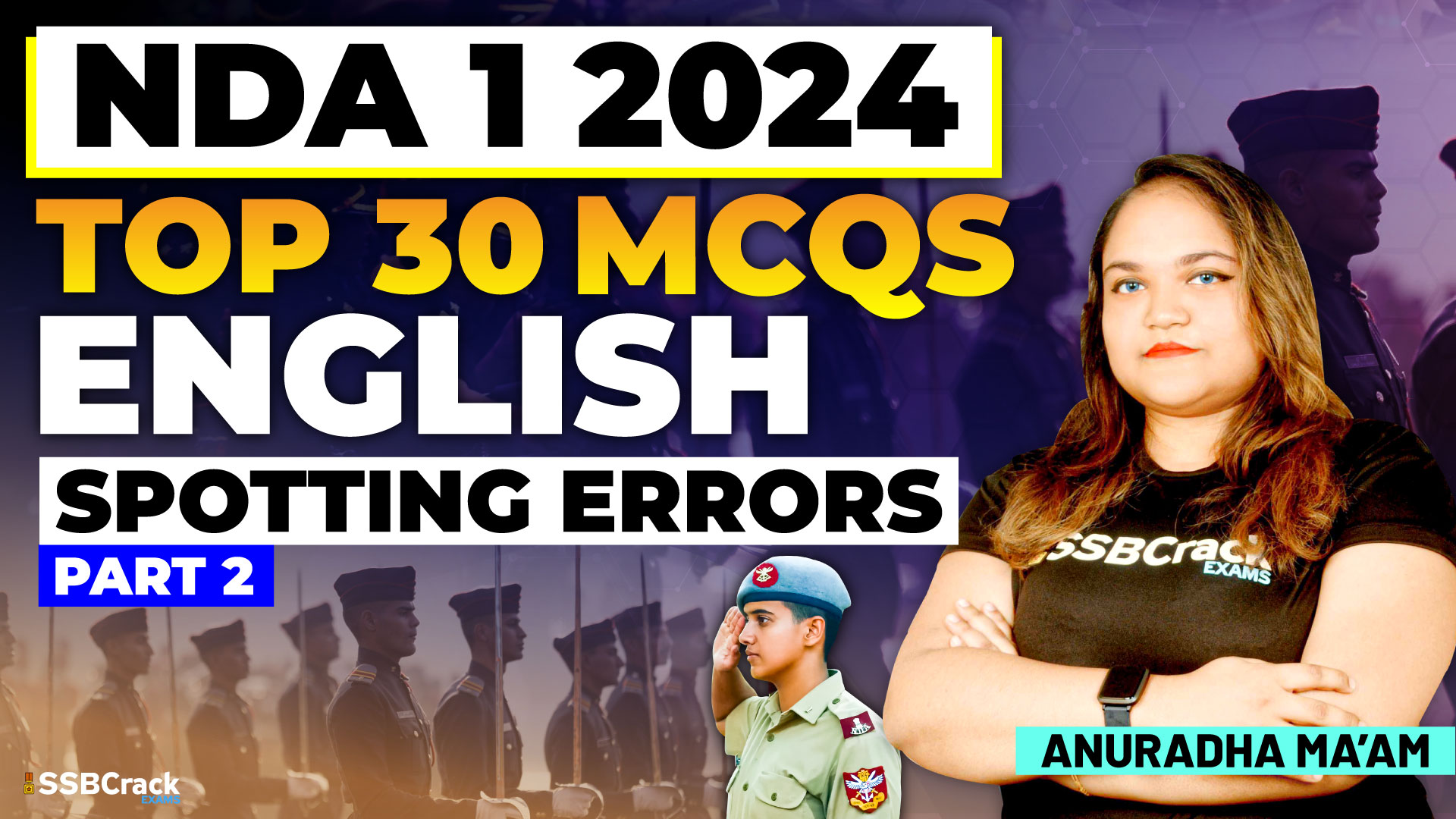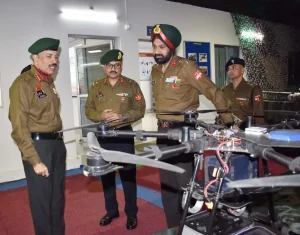The National Defence Academy (NDA) examination is a gateway for individuals with aspirations to serve in the revered armed forces. The English paper of the NDA exam incorporates diverse topics to assess candidates’ language proficiency, with “Spotting Errors” being a crucial segment. This article aims to provide aspirants with effective strategies on how to solve questions from the Spotting Errors topic, ensuring a comprehensive understanding and successful navigation of this challenging segment.
DIRECTIONS: Each item in this section has a sentence with three parts labelled as (a), (b) and (c). Read each sentence to find out whether there is any error in any underlined part and indicate your response on the Answer Sheet against the corresponding letter i.e., (a) or (b) or (c). If you find no error, your response should be indicated as (d).
Q) They decided (a)/ to talk it over (b)/ at dinner. (c)/ No error (d)
Ans. (d)
Q) I am not hungry (a)/ beside (b)/ I do not like eggs. (c)/ No error (d)
Ans. (b)
Q) Economics are (a)/ now-a-days included as a subject (b)/ in all colleges. (c)/ No error (d)
Ans. (a)
Q) The driver as well as (a)/ the conductor are (b)/ responsible for this accident. (c)/ No error (d)
Ans. (b)
Q) She told (a)/ her mother that (b)/ she is busy. (c)/ No error (d)
Ans. (c)
For more questions, check out Top 30 Spotting Errors MCQs In English | Part 2 | NDA 1 2024 | UPSC
- Understand the Basics of Grammar:The foundation of solving Spotting Errors questions lies in a strong grasp of grammar rules. Familiarize yourself with concepts such as subject-verb agreement, verb tenses, pronoun usage, and article placement. A solid understanding of these fundamentals is essential for accurate identification and correction of errors.
- Read the Entire Sentence:Approach each sentence holistically. Read the entire sentence carefully before jumping to conclusions. Spotting Errors questions often involve subtle nuances that can be missed if the sentence is not comprehensively understood.
- Check for Consistency:Ensure that the chosen words and phrases maintain consistency throughout the sentence. Inconsistent usage can be a red flag for potential errors. Pay particular attention to verb forms, pronouns, and other elements that should align cohesively.
- Trust Your Instincts but Verify:If a part of the sentence seems off, trust your instincts, but don’t make hasty decisions. Verify your intuition by assessing the entire sentence for contextual relevance. Eliminate options that are grammatically incorrect and contextually incongruent.
- Prioritize Common Error Types:Familiarize yourself with common error types frequently tested in Spotting Errors questions. These include subject-verb disagreement, incorrect verb forms, misplacement of modifiers, and faulty pronoun references. Prioritizing these common errors can streamline your approach.
- Be Wary of Tricky Modifiers:Spotting Errors questions may include tricky modifiers that can change the meaning of a sentence. Pay close attention to words and phrases that modify or describe other elements in the sentence, ensuring they are correctly placed and do not lead to ambiguity.
- Consider Contextual Relevance:In military settings, precision in communication is paramount. Consider the broader context of the sentence and assess whether the chosen words align with the intended meaning. Opt for options that not only correct the error but also enhance the overall clarity of the sentence.
- Practice Regularly:Consistent practice is key to mastering Spotting Errors. Engage in a variety of exercises and practice questions to expose yourself to different error types and sentence structures. This not only enhances your skills but also boosts your confidence in approaching Spotting Errors questions.
- Review Incorrect Responses:After completing practice sets or mock tests, carefully review any errors made in Spotting Errors questions. Understand the rationale behind the correct answers and learn from your mistakes. This iterative process contributes significantly to skill improvement.
- Manage Time Effectively:Spotting Errors is often part of a time-constrained examination. Develop a time management strategy to swiftly identify and correct errors within the stipulated timeframe. Prioritize accuracy but also cultivate the ability to make efficient decisions.
- Utilize Context Clues:Leverage the context of the sentence to identify errors. Context clues can guide you in selecting options that align with the overall meaning and intent of the sentence.
- Stay Calm and Focused:In the pressure of an examination setting, stay calm and focused. Maintain a systematic approach, and resist the urge to rush through questions. A composed mindset enhances your ability to spot errors accurately.
Conclusion:
Mastering the Spotting Errors topic in the NDA English exam requires a combination of grammatical proficiency, contextual understanding, and strategic application of rules. By adopting these strategies and incorporating regular practice into your preparation routine, you can enhance your ability to spot and correct errors with precision. Remember, success in Spotting Errors not only contributes to a higher language proficiency score but also aligns with the broader goal of effective communication in the dynamic and challenging environments inherent to a career in the armed forces.



















